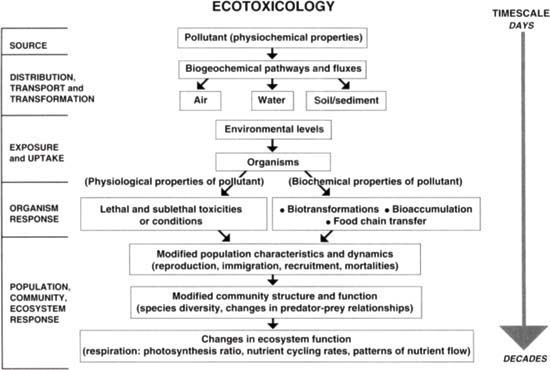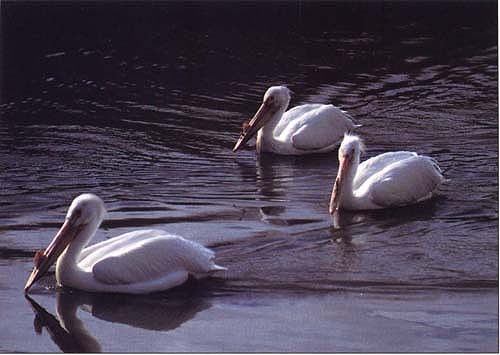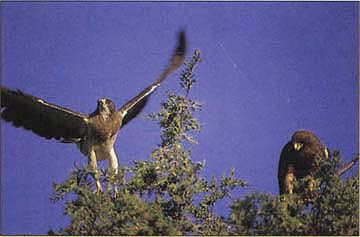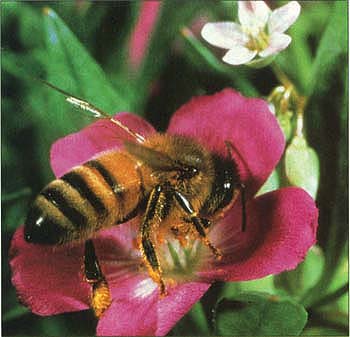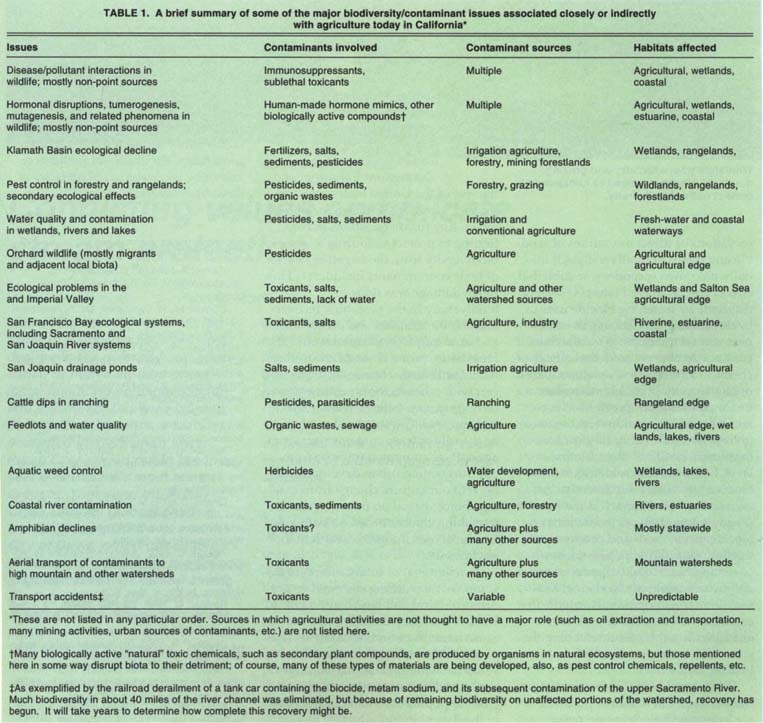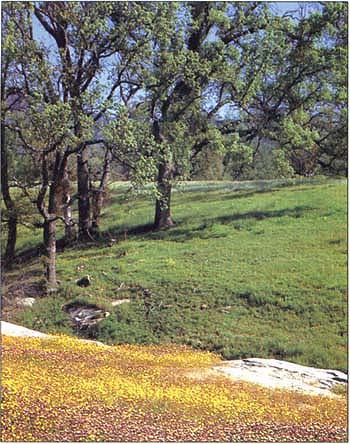All Issues
Society responds to contamination: Changes in pest control practices reduce toll on wildlife
Publication Information
California Agriculture 49(6):65-72. https://doi.org/10.3733/ca.v049n06p65
Published November 01, 1995
PDF | Citation | Permissions
Abstract
While biocides, or pesticides, are designed to kill agricultural pests, many of these toxicants have the unintended effect of depleting natural biodiversity. Determining the specific effect of a biocide on biodiversity is complicated because other factors, such as direct habitat loss, also decrease biodiversity. Both in California and nationwide, farmers have been among the first biocide-users to respond to the challenge of reducing unintentional contamination of the environment. As a result, today agriculture faces many fewer biocide-diversity conflicts than it did even a decade ago. Changes in use of biocides have led to recoveries of many previously affected populations of birds, which are perhaps the most studied aspects of biodiversity in these situations. The principal focus of ecotoxicology research today has now shifted from studies of direct toxicity to the more subtle effects of biocides, such as their interactions with other stressors, the identification and evaluation of toxic metabolites and biomarkers of toxicity, the physiological impairments caused by biocides such as immunosuppressions and hormone-mimics, and biocides' overall effects on ecosystem functions.
Full text
The agricultural spraying of toxaphene pesticide near wildlife habitat in 1971. Toxaphene has been replaced with more effective and safer pest-control agents.
… All this beauty of life is fading year by year, … fading like the glow of a sunset, … foundering in the grossness of modern refinement. — John Muir, 1868
After direct habitat loss and degradation, toxic environmental contaminants pose the greatest challenges for conservation. Toxicants, whether antibiotics or biocides, dry-cleaning solvents or naturally occurring excesses of selenium, are any substances capable of destroying living organisms. Based on the experiences of the past 40 to 50 years, the adverse effects on wildlife from both natural and human-made toxicants are among the most serious factors affecting natural resources. Human-made toxicants become environmental contaminants when they leave their target sites or move from safe to unsafe situations. Natural-resource managers must deal with the maintenance of wildlife populations, overall biodiversity, and healthy ecosystems and they must understand and deal with toxicants at many levels over varying timescales (fig. 1).
Twenty years ago, it looked as if biocide use, mostly from agricultural and public health pest control operations, was going to be a major continuing cause of wildlife extirpations at increasing and unprecedented rates. But today the picture is brighter due to extensive research on how biocides affect biodiversity, how to make biocides safer, and how to regulate pesticide use in the environment, combined with cooperation from all parties involved (e.g., regulators, farmers and conservationists). While California was previously the world's largest user and developer of toxic compounds in agriculture, the state is now a leader in reducing pesticide use. For example, California has set a goal of reducing pesticide use 50% by the year 2000. In addition, the state has pioneered integrated pest management, a strategy that focuses on long-term prevention or suppression of pests through a combination of biological control, alternative cultural practice, use of resistant crop varieties and carefully monitored, target-oriented application of pesticides when necessary.
Aims in Ecotoxicology
“Issues deserving particular attention are the combined effects of chemicals and natural stresses, the transfer of chemicals along food chains, the responses displayed by interacting species, and ecosystem function. Another issue is the recognition of the fact that environmental problems are not due to the mere presence of some potentially toxic chemical in the environment, but rather are due to the combination of such a chemical with an ‘ecological receptor’ such as a sensitive species, a critical interaction or a vulnerable process. The study of the properties of chemicals that confer environmental hazards has received quite some attention. Equally important are the properties of the receptors that confer environmental vulnerability. In the biomolecular sciences, signal-receptor interactions are studied extensively as the basis for biochemical responses. In a similar manner, ecotoxicology needs to develop a theory on the characteristics of ecological receptors for potentially toxic chemicals.”
N.M. van Straalen, Department of Ecology and Ecotoxicology, Vrije Universiteit, The Netherlands (Oikos 66:142-143, 1993).
Fig. 1. A diagram showing various levels at which toxic substances are studied in agricultural and other environments. The diagram is summarized from many sources that discuss the field of study that attempts to combine ecology and toxicology: ecotoxicology.
While we are continually replacing the biocides we use with newer chemicals, the quantity of allowable biocides used is still at an all-time high. Annual U.S. production of pest control agents is about 1 billion pounds, and about one-fifth of the total U.S. pesticide use is in California, primarily in the Sacramento and San Joaquin valleys, the Salinas River Valley, the Imperial Valley and Klamath Basin. Therefore, ecotoxicologists must remain vigilant.
This review will show that: (1) past pesticide-use has had serious impacts on biodiversity (that potential still remains); (2) species protection, new regulation and more enlightened biocide use have often resulted in population recoveries and restoration of studied biodiversity components (individuals, populations, species); (3) current biodiversity losses in intensive agriculture are now primarily due to factors other than agricultural contaminants (such as “clean-farming” — bare soil with cut or sprayed vegetation on the edges — and destruction of edge habitats by growers wishing to eliminate pest reservoirs, and so on), although these factors may exacerbate the effects of contaminants; and (4) habitats associated with certain types of agriculture can be beneficial to biodiversity if managed with biodiversity in mind.
Complexity of determining effects
Biocides and other toxic contaminants such as PCBs (polychlorinated biphenyls, a class of industrial compounds used for many purposes) can act negatively on biodiversity in many ways: through lethal and sublethal effects on individuals and populations, by inducing changes in ecological processes in both human-altered and natural habitats, and as added stressors to various organisms living in an environment that has already been much changed.
However, it is often difficult to pinpoint the effects of toxic contaminants on biodiversity because they usually act simultaneously with other stressors. Such stressors include: changes in habitat quantity; additional changes in habitat quality; pulses of sudden but normal environmental change (spring runoff or storms, for example); rapid changes in land-use such as flooding or burning; changes in nutritional states of individuals and populations; additions of exotic or increases in natural competitors; increased exposures or vulnerabilities to diseases, parasites, or predators; and increased disturbance levels. Although precise predictions cannot yet be made and cause-effect linkages are unclear in some cases, ecologists are beginning to realize that losses of biodiversity represent losses of ecosystem structure and stability in both natural and production-oriented landscapes. From the viewpoint of biodiversity, agricultural operations, like any other human enterprise, create new habitats that will not support natural biodiversity, or that create both habitat loss and habitat degradation.
Largely from the mid-1940s through the late-1970s, the agricultural contaminants that contributed to wildlife population losses were biocides that persisted in the environment such as rodenticides and organochlorine, organophosphate and carbamate insecticides that targeted specific pests with broad-spectrum, nonspecific approaches. In addition to being toxic, many of these biocides had other biological effects such as mimicking hormones (see sidebar at right), suppressing immune systems or being concentrated in bodies of animals or humans.
Toxic pollutants from other sources (industrial and urban wastes and “leakage,” public health, pest control, combustion byproducts, etc.) are also heavily responsible for losses of California's biodiversity in the past 4 to 5 decades. Toxic contaminants from these sources (such as PCBs, dioxins, heavy metals, sewage products, biocides used for public health and pest control, and many other materials) continue to “leak” into the environment and to exert negative effects on California's biota.
Population declines, recoveries
Another lesson that history taught us is that negative effects of biocides on biodiversity components are often not discovered until decades after a chemical's introduction, often after populations of organisms have been severely reduced or eliminated. While this used to be the rule rather than the exception, ecotoxicologists recognize that in the future, we will need to define or predict such problems before they occur rather than after (see box, p. 66). For example, literally before anyone knew what had happened, Peregrine falcons were extirpated in the entire eastern United States and were severely reduced in the rest of the country due to now-outmoded organochlorine insecticides. In almost all instances, the effects were directly attributable to the DDT metabolite DDE, which caused eggshell thinning, poor reproduction and subsequent population decline. Also involved were some “hard” (very toxic and persistent) organochlorine pesticides that caused direct mortality of adults. This is why many populations “crashed” — burning the candle at both ends, so to speak (both decreased fecundity and increased mortality occurred). It all happened so fast that in many instances, such as in the northern Appalachian area, people did not realize breeding peregrine populations were gone until some surveys were done. This basically happened between systematic surveys for the bird. Other raptors such as osprey and bald eagles also were reduced by biocides. Fortunately, various programs such as the worldwide “Peregrine Fund” and the UC Santa Cruz-based “Predatory Bird Research Group” have had remarkable success in breeding threatened raptors in captivity and reintroducing them all over North America.
American white pelicans feed in an irrigation canal in the Central Valley. Canal water not only transports toxicants and salts to waterways throughout the state, but can directly affect fish and wildlife using the water. In areas of limited habitat, canals may be the only place for many of them to feed.
Other actions such as use restrictions on the more hazardous biocides, resulted in lower contamination levels in the environment and subsequent population recoveries of many bird species. But these successes would not have been possible without (1) removal of the toxic causes of the birds' declines, and (2) the existence of adequate habitat for successfully reintroducing captive-bred birds or for remaining populations to recover.
Today, most of California's native biodiversity exists on fragments of habitat: some less intensively used lands; the managed and natural wildlands, and the interfaces between wildlands and either agriculture or urban areas. If one drives through the Central Valley, for example, it is apparent that today's farm operations have little wildlife habitat and even fewer original ecosystems left. (Wildlife habitat is any patch of native plants, or undisturbed mixture of native plus introduced plants, standing among the intensely and frequently changed agricultural or urban terrain.) Driving from Los Angeles to San Diego, one can see the same fragmentation resulting from urban growth. To appreciate how extreme these and other changes have been in California, all one has to do is to read John Muir's account of his travels across the Central Valley in 1868 (Rambles of a botanist among the plants and climates of California, 1874) and then compare that to the 1965 account of R.F. Dasmann (The Destruction of California, 1965). The loss and extreme modification of habitat is especially evident in the southern two-thirds of California, but is also extensive in northern parts of the state such as the Klamath Basin. Few riparian areas are left intact and those that do remain are mostly narrow strips that are often heavily grazed, developed or otherwise changed.
California's water supply is completely controlled and often is heavily laden with agricultural chemicals, sediments and salts. There are almost no clean- and steady-flowing riverine systems or wetlands left on most of the land that is now heavily dominated by intensive agriculture and heavily urbanized areas. Well over 90% of the original fresh-water wetlands are long-gone, mostly due to water management programs. Similarly, more than 95% of our original coastal wetlands are gone due to urbanization and harbor development. The fresh-water wetlands that remain are mostly in National Wildlife Refuges or state game-management areas, or are maintained by private duck clubs or farmers who manage their lands for hunting. Even so, many of the wildlife refuges in the western United States are contaminated by runoff of biocides and salts originating from agricultural operations on their watersheds.
Ironically, the agricultural systems that once led to wildlife declines may now themselves be threatened by the urbanization and land development that poses an ever-increasing threat to biodiversity. To solve biodiversity problems, we must develop a fresh approach to preserving “pockets” of habitat that have escaped the decades of development and change. Much of California's biodiversity still persists in these pockets, much could be restored in agricultural environments if farmers can be shown a benefit.
Fragmentation increases risk
This habitat fragmentation makes California's biodiversity more vulnerable than ever to toxic chemicals, which are still often used regularly and heavily. Toxic compounds (even the newer and safer ones), therefore, have potentially catastrophic effects on the biodiversity that does remain in pockets of habitat. Before the habitat was so changed, biodiversity might have been more resistant to extreme or rare environmental challenges.
To some, the fact that there is little remaining native biodiversity in the most intensively used areas of California means that there is no reason any more to “worry about” preserving that biodiversity. Moreover, some attack environmental regulations designed to protect biodiversity in an attempt to maintain the status quo — using land without considering the effects on biodiversity.
But to farmers, resource managers, and conservationists, this severe reduction in habitat quality and quantity means an ever-growing responsibility both for restoring wild areas and for making even stronger efforts to protect the valuable resources that do remain. Most of today's conflicts between biodiversity and toxic contaminants in California's agricultural and urban areas arise when resource managers attempt to protect or restore highly threatened native ecosystems. If provided adequate incentives by state and federal governments, land managers can also help engender the philosophy that protection of biodiversity adds value to the land.
Tremendous habitat reduction also means that resource managers must consider the migratory wildlife that uses these intensively managed agricultural areas or their watersheds at certain times of the year. For example, toxic levels of various salts such as selenium and inorganic materials such as nitrogen compounds in evaporation ponds (formed by irrigation wastewater from farms) affect more than the resident wildlife. Migratory wildlife may carry away enough toxic materials in their body stores to affect reproduction or other vital functions once they have traveled as far as the Arctic or crossed international borders into Canada, Mexico and Russia.
Readily observable negative effects were common in the past (from the 1940s to the 1980s) when persistent pesticides were being used more heavily in the areas where migratory wildlife congregate such as the Central Valley, Klamath Basin and Salton Sea.
The lower Klamath Basin National Wildlife Refuges in California and Oregon embody the enigma of how a suite of stressors, including biocides, cannot be separated from each other when conserving and managing biodiversity. Historically (before 1900 and through the 1960s), the four lakes in the basin (Upper Klamath, Lower Klamath, Tulelake, and Clear Lake, now a reservoir) were among the most diverse and productive stopover sites for migrating birds in all of North America. Today the water in the system is so intensively controlled and managed that the lakes support far fewer migratory and resident birds.
Swainson's hawk survival depends on land use
The California range of the Swainson's hawk is more restricted today than it was about 50 years ago. The primary causes of the hawk's range contraction were losses of the native prairies where the species lived. This raptor was formerly much more widespread in California, found in most of the state where suitable habitat existed, but now persists only in regional “pockets” of native prairie or open agricultural land. One surviving population occurs in Yolo, Solano, Merced, and Sacramento counties, where the local populations thrive best in a certain type of agricultural habitat (open pastures, cut alfalfa) and where they eat large insects and small mammals that are abundant there.
While low food supplies due to past biocide uses for insect and rodent pest control may have contributed to the Swainson's hawk's range contraction, there is little evidence that toxicants were directly responsible for the decline of the overall population. In any case, today most foods taken by the hawk are not widely controlled with toxic chemicals, which helps ensure adequate food supplies for reproduction.
Although the open-type habitat where most of the remaining Swainson's hawks live and feed is not native, it does resemble their historical habitat in a functional way. Nesting habitat is provided by the coincidental existence of remaining riparian habitat and woodlots around farmsteads that are interspersed in the agricultural land. Many nesting Swainson's hawks have become tolerant of human presence and often they nest in city trees if foraging areas are close enough for efficient feeding. Yet, Swainson's hawks are also vulnerable to change: they disappear when urban development eliminates feeding habitat or makes it too far away for efficient foraging. Swainson's hawks would probably disappear if land use changed significantly (orchards, cotton fields, more intensive pest control, urbanization).
The Swainson's hawk is an unusual case in that the continued health of the species in these habitats is probably now dependent on a certain type of land use and the existing “disturbed” habitat pattern. This kind of habitat also supports a few other species of raptors (such as red-tailed hawks, northern harriers, great-horned owls, and white-tailed kites) and other wildlife such as the yellow-billed magpie. However, these habitats have lost most of their original biodiversity such as native vegetation, many native insects and rodents, and birds such as the burrowing owl and red-shouldered hawk.
Clouded future
The basin has a long history of intensive land use and biocide use. In the 1960s, this basin was known to be highly contaminated with agricultural biocides such as DDT, endrin and toxaphene that were causing severe losses of wildlife biodiversity. Yet today, residues of many pesticides in wildlife in the basin are so low that we now use some bird species from those refuges as “low contamination controls” for comparisons with other areas in California.
However, the area remains in a state of ecological deterioration due to additional factors. The Lower Klamath portion and parts of Upper Klamath Lake in particular still support abundant natural biodiversity, both resident and migratory species because of wildlife management. However, other parts of this four-lake wildlife refuge system (especially the Tulelake NWR) are considered so changed environmentally and so intensively oriented to agriculture that wetland restoration will be necessary to restore biodiversity needs on the refuge lands. At Tulelake NWR, newer pesticides (such as safer organophosphates) are still used on lease-lands, and might still harm wildlife. Large portions of the Tulelake refuge have almost no natural or even managed habitat due to the use of “clean-farming” and monotypic farming techniques, such as planting large areas with one type of crop. Currently, agricultural scientists are working with wildlife managers to change the agricultural, monotypic environment on these lands to a habitat mosaic (of different types of crops and more diverse edge, interspersed with wetlands) that hopefully will increase both the diversity of species and the efficiency of the agricultural operations. For example, long-term flooding helps kill nematodes that damage several crops.
Toxic and “broad spectrum” pesticides often kill unintended targets such as honeybees. (Photo by Kenneth Lorenzen)
Biodiversity in most wetlands associated with arid, irrigated western lands is now threatened by salinization and other contaminants associated with agriculture, mining operations, logging and pulp mills. These include contaminant effects on biodiversity at the many National Wildlife Refuges throughout the western United States as well as in the San Francisco Bay, the San Joaquin Valley, the Salton Sea and the Imperial Valley. However, it remains to be shown how large a role currently used biocides are playing in biodiversity changes in these areas because few ecotoxicological studies have been conducted.
“Broad spectrum” effects
Relatively less is known about the effects of biocides on insects and other invertebrates, microorganisms and plants as they function in ecosystems. Nevertheless, since most pesticides are targeted at insect pests, and most herbicides are targeted at plant pests, these biocides almost certainly also cause losses of invertebrate and plant biodiversity. In many cases, the use of toxic and “broad spectrum” pest control agents have eliminated or reduced invertebrates such as butterflies, honeybees, beetles and earthworms. In addition, recent studies indicate that toxic contaminants disrupt invertebrate and microorganism communities in soil and water, and alter ecological functions such as nutrient transfer that are important to agricultural crop species as well as to native species. Yet, we know less about biocides and their potential effects on these biodiversity components, and how overall ecosystem functioning (native or managed systems) is affected.
Some problems today are also still associated with non-point source problems. These include transport of toxic chemicals via water drainage (such as agriculture sump contamination from runoff, a problem at most wildlife refuges because much of the water they receive is recycled irrigation water), transport of toxics through the air (such as aerial movement of organophosphate insecticides from the Central Valley to the Sierra Nevada and the movement of herbicides into non-target areas), and lingering problems left by previous years' uses of now-obsolete, but persisting toxic compounds. An excellent example of a “lingering problem” is the DDT-metabolite, DDE, residues of which can be found universally in all vertebrate wildlife tissues, despite the discontinuance of DDT some 20 years ago!
Ideally, the goal in today's world regarding agricultural contaminants and habitat loss onsite is to try to ensure that agriculturally affected systems contain adequate levels of “desirable” biodiversity. Managed wildlands (such as those where forestry and grazing dominate) also need to be managed to enhance and protect native biodiversity. And intact native wildlands (with almost no agricultural or forestry impact) need to be maintained as much as possible in their original “evolutionary states.” In some instances, certain species of wildlife have survived under particular agricultural regimes that “mimic” conditions of their original habitat, but this is the exception rather than the rule (see box, p. 69 ).
The history of biocide use has shown that we need to be skeptical and cautious when considering any toxic materials and their potential effects on biodiversity. California is still relatively rich in plant and animal biodiversity, natural resources and habitat diversity, much of this due to the state's size and geographic diversity. Threats to biodiversity are complex, often related to toxic contaminants, but seldom to toxic contaminants alone. In most instances today, we cannot even consider contaminants alone in evaluating threats to biodiversity. And such threats from all forms of pollution come from inside and outside the state.
What lies ahead?
Historical reviews reveal there is a typical sequence of events when toxic contaminants threaten biodiversity: (1) original overuse and overdependency on toxic biocides, quite often associated with habitat destruction; (2) observations of direct mortalities of wildlife and losses of biodiversity; (3) initially unknown secondary or sublethal effects are discovered later; (4) society responds by lessening biocide uses or by developing new chemicals or new pest-control methods; (5) researchers continue to observe sublethal effects of chemical stressors and resultant losses of biodiversity (through mechanisms unanticipated from previous experimental work or previous field studies); (6) researchers identify implications for human health at the sublethal level, helping to focus attention on biodiversity issues (biodiversity loss is seen as the “dead canary in the mine”) (7) government places restrictions on biocide use in food- and product-production; (8) wildlife populations recover and biodiversity improves, but only where adequate habitat still exists; (9) human population growth continues to encroach on wildlands and agricultural lands, threatening the state's increasingly vulnerable biodiversity.
TABLE 1. A brief summary of some of the major biodiversity/contaminant issues associated closely or indirectly with agriculture today in California*
Wildlands where forestry and grazing dominate can be managed to enhance and protect native biodiversity.
While some biocides that persist in the environment remain a problem, we have made encouraging progress in utilizing newer and more effective pest-control strategies that are both more effective and more focused on their target pests. Future agricultural contaminant-biodiversity conflicts will probably be concentrated on point-source problems. These localized uses of toxic compounds occur in or near restricted habitats which are refugia for various flora and kinds of fauna. Table 1 summarizes some of the continuing and developing contaminant problems in California that warrant more study.
The well-documented recoveries of osprey, brown pelicans and many wildlife populations previously known to have been affected by contaminants throughout California and the rest of the United States attest to the fact that there is reason for optimism. Key future questions in continuing to protect California's biodiversity from the negative effects of toxic contaminants include: (1) How much damage was done to biodiversity in the past, how recoverable are populations and ecosystems and how might they be restored? (2) How in the past did (and how in the future will) toxic chemicals act in concert with other factors such as water development practices, habitat loss and disease? (3) What has been or will be the role of toxic contaminants from agriculture compared to those from our burgeoning urban development? (4) Will our culture change from making choices based on pure economics to making choices based on both longterm economics and the health of the environment?
A major goal of future efforts to develop “early warning systems” to predict ecological and health effects of various new biocides before they cause harm to natural ecosystems (see p. 40 ); but more importantly, to develop newer and better agricultural methods that do not adversely affect wildlife populations and biodiversity in the first place.
In most of North America and Europe, the impacts of biocide use on wildlife have lessened in recent years. However, this is not true in Third World countries. For example, in parts of Latin America, agricultural contaminants and contaminants from other sources—along with extensive habitat destruction—are contributing to large dieoffs of some of our migratory birds. Whether the future holds a favorable scenario for the world's wildlife depends upon agriculturalists and land managers everywhere seeing more value in biodiversity, and upon the inherent resilience of wildlife to recover from the effects of toxicants.




